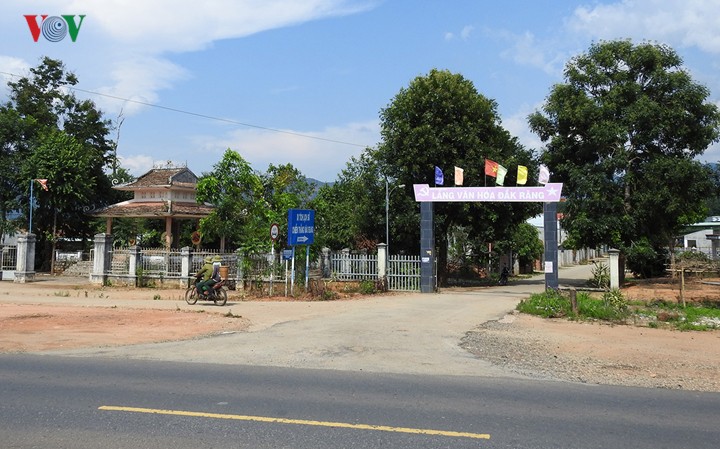(VOVWORLD) - The Ho Chi Minh Road is more than 3,180km long. A 155km section of the road that runs through Kon Tum province was built in 2000. The road has improved the lives of ethnic people living in hamlets along the road. Let’s visit Dak Rang village in Ngoc Hoi district, Kon Tum province, to get a sense of the local life.
 Dak Rang village gate Dak Rang village gate |
The 120 households of Gie Trieng ethnic people in Dak Rang village begin a new workday at 2:30 a.m., when they go out to collect latex from rubber trees, a job which requires strict time discipline.
A Heo told us they began planting rubber trees in 2003 when the section of the Ho Chi Minh Road running through the village was built by the State. Now each household has between half a hectares and 2 hectares of rubber trees. Each household also has a signed contract with the Dục Nông Rubber Plantation to harvest latex from 1-3 hectares of rubber trees.
A Heo said a worker can earn more than 170 USD a month, adding: “The villagers are eagerly engaged in production. We have been trained to grow rubber trees. We also grow coffee trees and have studied methods of increasing rice productivity.”
Before 2003, it took Dak Rang villagers all day to walk to the center of Ngoc Hoi district along the very crude road. Agricultural products were sold at low prices and poor transportation was a large part of the reason.
Village patriarch A Brol Ve recalls: “In the past, traveling was very difficult, which kept us in poverty. Sick people weren’t treated because it was too hard to take them to a medical station. We are very glad that everything - roads, bridges, and electricity - is more convenient now.”
The completion of Ho Chi Minh Road section linking Dak Rang village with Quang Nam province and Da Nang city to the north and other Central Highlands provinces to the south, has given the hundreds of ethnic minority hamlets new development opportunities.
A household in Dak Rang village can earn thousands of USD per year growing rubber, coffee, and wheat. Today only five households could be considered poor. Dak Rang has 22 Party members and 35 Youth Union members whose living standard is higher than average.
Y Um Truc, Secretary of the village’s Party Cell, said: “Party members lead the village in economic development and application of technology. They have helped the other villagers improve both economically and socially.”
 The spiritual and cultural life of Dak Rang people improve The spiritual and cultural life of Dak Rang people improve |
Thanks to their higher living standard, the people of Dak Rang now pay more attention to their spiritual and cultural life. They encourage each other to preserve the traditional culture represented by their communal house, gong team, Xoang dances, and Gie Trieng festivals. As a result, Dak Rang has become a tourist destination. Vietnamese and foreign tourists now come to Kon Tum to learn about the Gie Trieng culture.
Hieng Nang Thuan, Chairman of the Dak Duc Commune People's Committee, said: “The Ho Chi Minh Road has helped the locals develop their economy, society, security, and defense. Trading goods has become easier.”